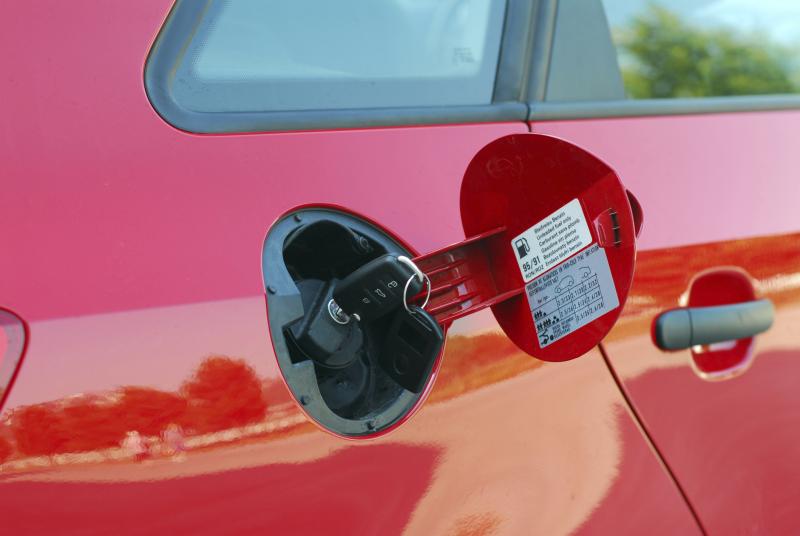
Hey -- it happens. Sometimes, your fuel just isn't in the vehicle it should be. Gas siphoning has gotten a pretty nefarious reputation since the OPEC shortages of the 1970s, but there are plenty of legitimate reasons for needing to transfer fuel from one vehicle's tank to another's. Maybe you've got a lawn to mow, a boat to fuel, or you're helping a broken-down friend on the side of the road. Maybe you're helping yourself to the fuel from your second car three days before payday.
Liquids always want to go downhill, but not because of gravity, as you might expect. The pressure of the Earth's atmosphere -- about 14 psi at sea level -- constantly pushes down on the surface of any liquid, forcing it to the lowest point in the container. If you stick a tube in the liquid, and remove the air pressure -- create a vacuum -- the fluid can go up the tube. Then, when you lower the tip of the tube, the liquid will go up the tube from the original container and down to its new lowest point in the second container.
Put your gas can on the ground next to the vehicle's tire; it has to be lower than the vehicle's fuel tank in order for fuel to seek it as the new low point. Put a tube, preferably a clear, flexible plastic one, down into the vehicle's gas tank through the fill tube until it bottoms out in the tank. Bear in mind that some vehicles use anti-siphon valves or screens in the tube, so you might be out of luck if the tube stops before it gets to the tank. Attach the other end of the tube to a hand-held vacuum pump. Don't use your mouth to create a vacuum -- gasoline is not part of a healthy diet. Lower the second tube from your vacuum pump into the gas can on the ground.
Start pumping to develop a vacuum in the tube. You should feel immediate and increasing resistance as the pump draws the gasoline up the tube. If you feel no resistance and it's just pumping air, then the end of the tube may not be in the gasoline in the tank. Adjust the position of the tube and try again. If you can't get fuel to flow, pull the tube out to see if there's gasoline on the end. You may be hitting an anti-siphon screen further down, or the tube isn't dropping into the gasoline. Once you have fuel flowing up the tube, through the pump and out the other side, you can release vacuum pressure.
With the vacuum pressure released, the fuel will continue to flow of its own accord into the container. Once the container starts to get full, pick it up slightly and hold it an inch or two off the ground. The flow will slow down, because the gas can is approaching the level of the fuel tank. You can moderate flow by raising or lowering the gas can. Once you're finished, simply lift the fuel can higher than the fuel tank in the vehicle and the flow will stop completely. Remove the hose from the can immediately, or you may end up sending fuel right back into the tank. Some vacuum pumps have anti-drainback valves, though -- these will prevent gas from draining back, but you'll be forced to pump the rest of the gas out of the pump before disassembling it to clean it. Afterward, you can pull the siphon hose from the tank, and put the caps back on the tank and gas can.